What Is GS1 Digital Link and How to Implement It in Product Packaging
In late 2020, GS1 introduced its global QR code migration plan to transition from traditional barcodes to QR codes, enabling more dynamic and interactive product information. GS1 digital link was developed in this context, allowing products to connect to the internet and providing consumers and businesses with real-time, dynamic product information through a simple QR code scan.
What is GS1 Digital Link?
GS1 digital link is essentially a URL, but it's more than just a typical web address.
It allows product data, such as GTIN (Global Trade Item Number), batch numbers, expiration dates, the product's place of origin, ingredient lists, and other relevant information, to be embedded and accessed through a single link.
In simple terms, GS1 Digital Link offers a standard way of expressing a product's GS1 keys and attribute data in a format that can be used on the Web, according to the GS1 Digital Link Implementation Guide provided by GS1 US.

This link is typically encoded in a QR code format, enabling easy scanning by consumers and supply chain participants, providing real-time access to detailed product information, promotional content, or traceability data.
Benefits and Applications of GS1 Digital Links
GS1 Digital Links allow a single data carrier, such as a QR code, to serve multiple purposes, including supply chain operations, point-of-sale (POS), and extended consumer information.
This reduces the need for multiple codes on product packaging, thereby saving printing costs and supporting environmental sustainability.
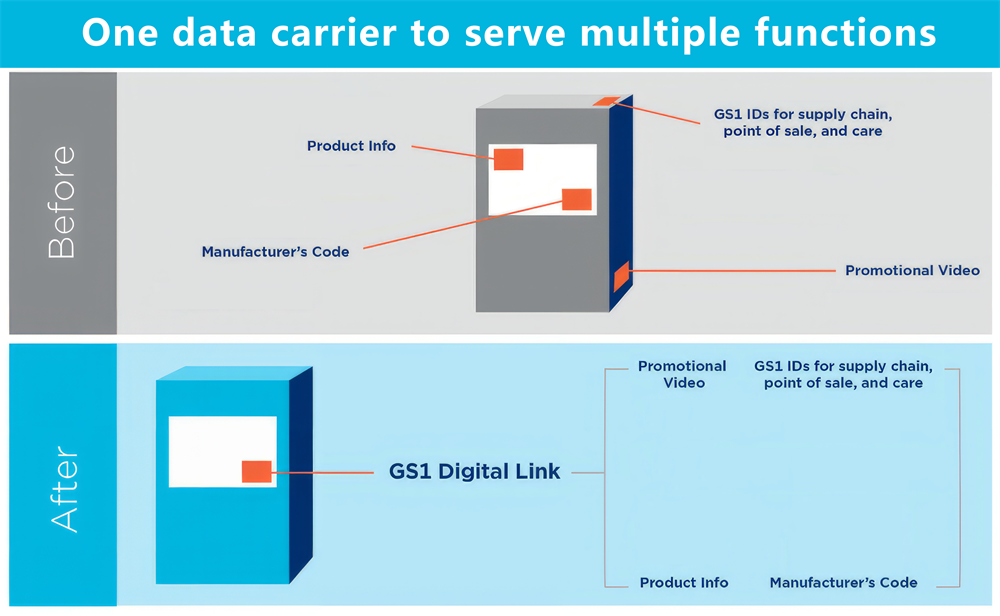
The retail industry usually uses UPC/EAN product barcodes. However, these barcode formats only identify the product type and don't include details like batch numbers, expiration dates, or specific weights.
GS1 digital links can embed this important information especially batch and lot numbers, offering more granular product identification, vital for manufacturers when tracing and recalling products.
Moreover, customers can scan the GS1 Digital Link QR code with their smartphones to easily access product details, such as the product's origin, ingredient list, and product webpage.
Additionally, GS1 Digital Links enable real-time updates. Brands can change the content linked to a product without altering the packaging, ensuring that consumers always receive the most current information.
Key Applications of GS1 Digital Links:
1. Retail: GS1 Digital Links enhances retail operations by improving product traceability, inventory management, and customer engagement through direct access to product information.

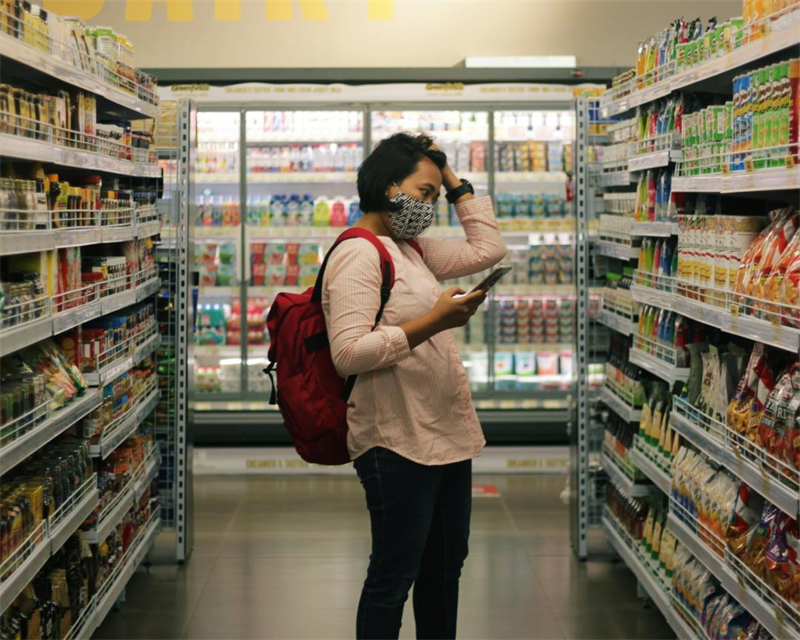
2. Healthcare: These links provide crucial access to electronic patient leaflets and other vital data, reducing errors in clinical settings.
3. Supply Chain Management: They streamline data sharing and traceability across supply chains, ensuring accurate information from production to consumer.
4. Food and Beverage: GS1 Digital Links are vital for managing product recalls and providing detailed information on food products, enhancing consumer safety.
How to Implement GS1 Digital Link on Product Labeling and Packaging
Integrating GS1 Digital Link into product packaging requires following a few important steps:
1. Generate a GS1 Digital Link and QR Code
● Start with the Base URL: It's recommended to use the GS1-provided domain, such as https://id.gs1.org/, for easier integration and consistency. Companies can also use their own domains, as long as they follow the GS1 Digital Link URI structure.
● Add the GTIN: Append the product's Global Trade Item Number (GTIN) to the base URL.
● Include Additional Data: Add optional parameters like batch numbers or expiration dates.
● Create the URL: Combine these elements into a single URL.
● Encode into a QR Code: Use a GS1 digital link QR code generator to convert the URL into a scannable QR code.
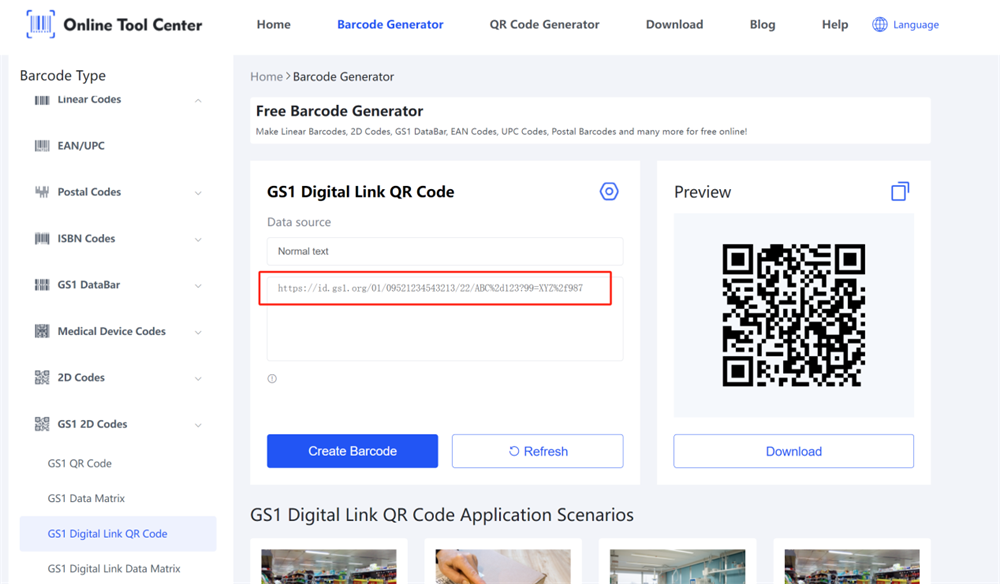
2. Print and Apply the GS1 Digital Link QR Code
Once the GS1 Digital Link QR Code is generated, the next step is to print and apply it to your product packaging.
Given that the QR code includes dynamic, real-time information such as batch numbers, serial numbers, and production dates, the solution for printing the GS1 digital link QR codes must involve real-time product coding or labeling.
The printing or labeling equipment needs to be integrated into the production or packaging line, enabling it to access ERP data and print labels with the GS1 Digital Link QR Code in real-time, or directly mark the code onto the product.
HPRT offers comprehensive QR code marking and labeling solutions, helping manufacturers achieve efficient QR code identification and traceability throughout the entire supply chain.
● HPRT Industrial Barcode Printers
Often equipped with optional accessories like cutters or peelers, suitable for large-scale printing barcode and QR code labels. They support different label materials and flexible printing sizes, with a maximum resolution of 600 dpi.
The printed labels can be applied to a wide range of products and packaging surfaces, including paper, plastic, metal, and glass, providing high flexibility for diverse applications.
Recommended products: HPRT 4-inch Industrial Barcode Label Printer Glory, HPRT 600 dpi Thermal Printer Grand.
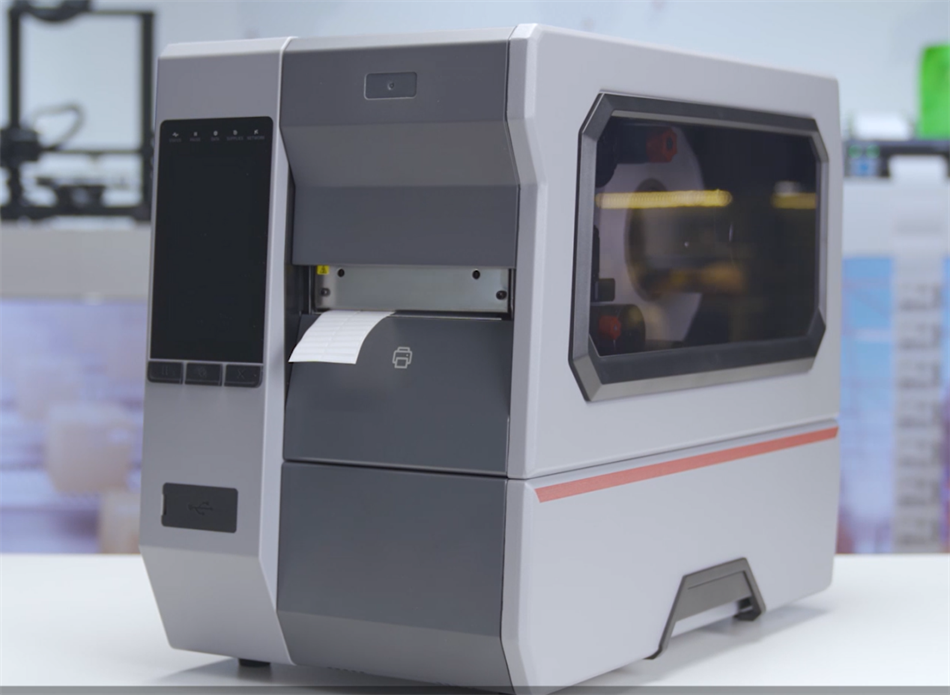
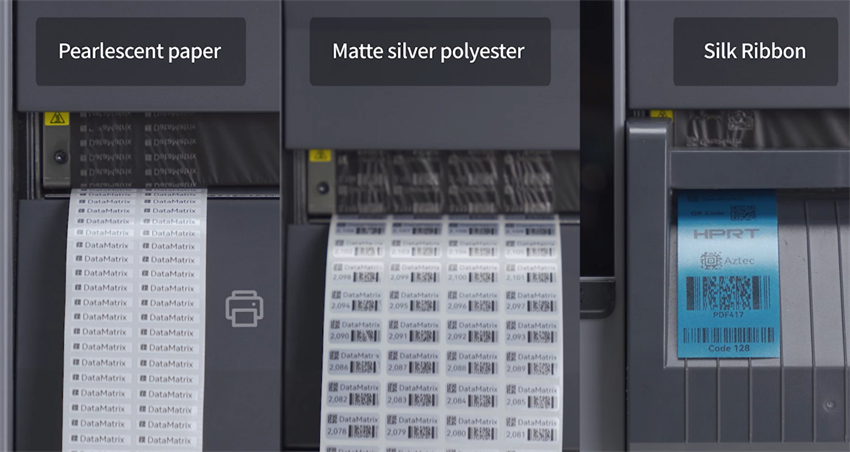
● HPRT Thermal Transfer Overprinters
Using thermal transfer technology, HPRT TTO printers produce high-resolution and durable prints, withstanding everyday wear, high temperatures, and humidity.
They handle a wide range of text, graphics, barcodes, and QR codes with real-time variable data. The maximum print area reaches 53*100mm, with a resolution of up to 300 dpi.
These printers are widely used for flexible plastic packaging, including plastic film wraps and bagged products, and are particularly prevalent in the food, pharmaceutical, and daily chemical industries.
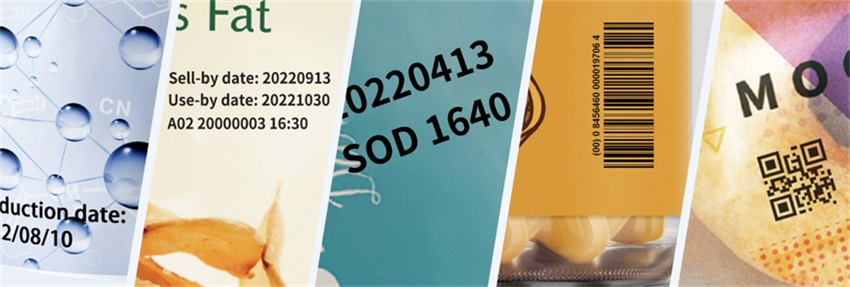
Recommended product: HPRT FC53 TTO Printer.
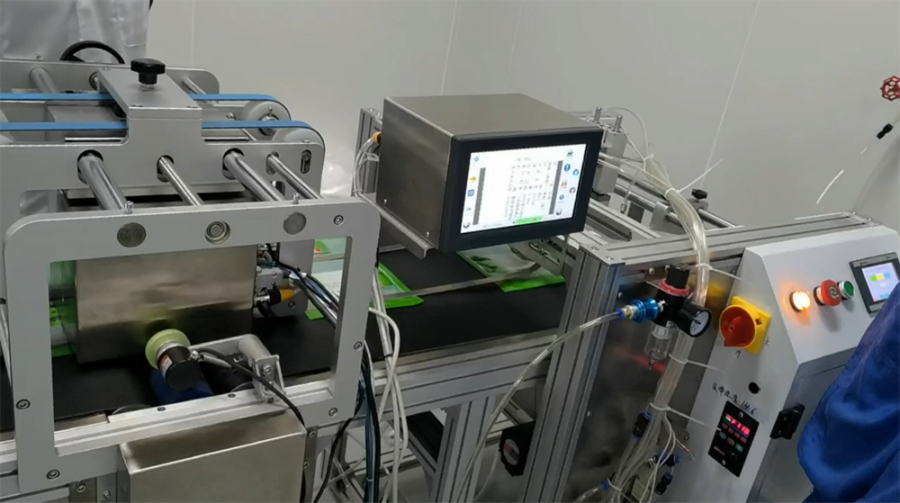

3. Test and Validate
Before full-scale deployment, it's essential to test the GS1 Digital Link QR Codes to ensure they work correctly. This involves scanning the QR code across various devices and environments to confirm that it consistently redirects to the intended content. Validation ensures that the system functions smoothly across the entire supply chain.
4. Monitor and Update
After implementation, continuously monitor the performance of your GS1 Digital Link QR Codes. Regular updates may be needed to the linked content, especially if the product information changes or if you want to engage consumers with new promotional material.
In the midst of digital transformation, GS1 Digital Link is quickly becoming a go-to tool for industries looking to boost product transparency and streamline supply chain management. With its powerful data capabilities and wide-ranging applications, it's helping businesses stay ahead. Plus, using GS1 QR codes is making it easier for global retailers and brands to simplify packaging and engage with consumers more effectively.
At HPRT, we're here to help you take the next step in your digital transformation. Contact us for expert solutions that deliver cost-effective, high-quality, and compliant GS1 QR code marking and label printing. Let's work together to open up new possibilities for your business.








